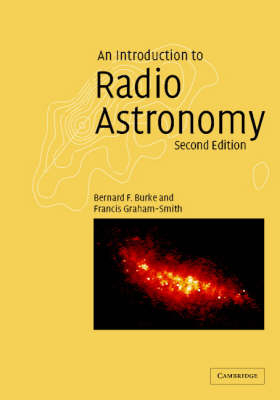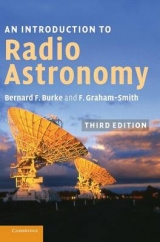
An Introduction to Radio Astronomy
Cambridge University Press (Verlag)
978-0-521-80889-7 (ISBN)
- Titel erscheint in neuer Auflage
- Artikel merken
Radio astronomy uses unique observational techniques and offers the only way to investigate many phenomena in the Universe. This book, by two founders of the field, presents both a clear introduction to radio telescopes and techniques, and a broad overview of the radio universe. The material in this new edition has been expanded and updated, reflecting the developments in the field over the last decade. New material reflects the increasing use of aperture synthesis and Very Long Baseline Interferometry, and the further exploitation of molecular spectral lines. A new chapter is devoted to the fundamentals of radiation and propagation theory. The second half of the book constitutes a review of radio observations of our Milky Way galaxy. Wide-ranging and clearly written, this book provides a thorough and up-to-date introduction to the subject for graduate students, and an invaluable overview for researchers turning to radio astronomy for the first time.
Francis Graham-Smith obtained his PhD in radio astronomy, and went on to become Director of the Royal Greenwich Observatory, and later the 13th Astronomer Royal. He is currently Emeritus Professor at Jodrell Bank Observatory, University of Manchester, where he is involved in pulsar research. Bernard Burke is a member of the National Academy of Science, and the American Academy of Arts and Science. He has been involved in the development of radio astronomy in the USA, most notably using Very Long Baseline Interferometry. In 1955 he discovered radio emission from Jupiter.
1. Introduction; 2. Radio telescopes as antennas; 3. Signal detection and noise; 4. Single-aperture radio telescopes; 5. The two-element interferometer; 6. Aperture synthesis; 7. Radiation, propagation and absorption of radio waves; 8. Galactic continuum radiation; 9. The interstellar medium; 10. Galactic dynamics; 11. Stars; 12. Pulsars; 13. Radio galaxies and quasars; 14. Cosmology and the cosmic microwave background; 15. Cosmology: discrete radio sources and gravitational lenses; 16. The place of radio in astronomy; Appendix A. Fourier transforms; Appendix B. Celestial coordinates, distance and time; Appendix C. The origins of radio astronomy; Index.
| Erscheint lt. Verlag | 4.4.2002 |
|---|---|
| Zusatzinfo | 3 Tables, unspecified; 14 Halftones, unspecified; 189 Line drawings, unspecified |
| Verlagsort | Cambridge |
| Sprache | englisch |
| Maße | 180 x 255 mm |
| Gewicht | 1059 g |
| Themenwelt | Naturwissenschaften ► Physik / Astronomie ► Astronomie / Astrophysik |
| ISBN-10 | 0-521-80889-8 / 0521808898 |
| ISBN-13 | 978-0-521-80889-7 / 9780521808897 |
| Zustand | Neuware |
| Haben Sie eine Frage zum Produkt? |
aus dem Bereich



